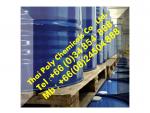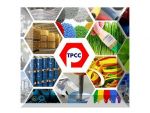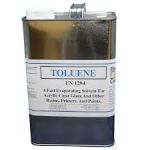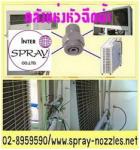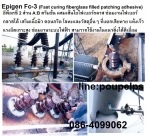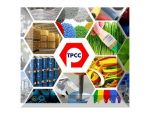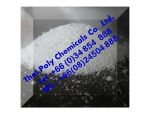NP-9, Nonylphenol ethoxylated, โนนิลฟีนอลอีทอกซิเลต |
฿1 |
|
ชื่อผู้ประกาศ : ไทยโพลีมิเนอรัล เบอร์โทรศัพท์ : 034854888, 034496284 โทรศัพท์มือถือ : 0800160016 ที่อยู่ : 36/5 ม.9 ต.นาดี อ.เมืองสมุทรสาคร จ.สมุทรสาคร ร้าน ไทยโพลีมิเนอรัล |
นำเข้าและจำหน่าย NP-9, Nonylphenol ethoxylated, โนนิลฟีนอลอีทอกซิเลต
สอบถามข้อมูลเพิ่มเติมได้ที่ ฝ่ายขาย
บริษัท ไทยโพลีเคมิคอล จำกัด โทรศัพท์ 034854888,
034496284 มือถือ 0824504888, 0800160016
โทรสาร 034854899, 034496285
NP-9, Nonylphenol ethoxylated, โนนิลฟีนอลอีทอกซิเลต, โนนิลฟีนอลอีทอกซิเลท
Tergitol
NP-9, Nonylphenol Ethoxylate (NPE), Nonoxynol, เป็นสารลดแรงตึงผิว
ประเภทไม่มีขั้ว (Nonionic surfactant) สามารถล้างออกได้ง่าย
มักใช้ในงานผลิตสินค้าประเภทสารทำความสะอาด งานผลิตกระดาษและเส้นใย
Nonylphenol
is a family of closely related organic compounds, a subset of the alkylphenols. This collection of compounds is a precursor to commercially important detergents. Nonylphenol features both polar and hydrophobic subunits, the
Production
and basic properties
The
material known collectively as nonylphenol is produced by acid-catalyzed alkylation of phenol with a mixture of nonenes. Millions of kilograms are produced annually. The nonyl group, which is highly branched, attaches to the phenol ring via the 4- and, to lesser extent, the 2-positions. This mixture of isomers is usually available as a pale yellow liquid, although the pure compounds are colorless. The organic compound 1-nonyl-4-phenol is not normally a component of what is marketed as nonylphenol. The nonylphenols are poorly soluble in water but soluble in alcohol. In the environment, nonylphenols arise from the
Natural
occurrences
Nonylphenol
has been found to be a component of the slime produced by the velvet worm as a
Applications
Alkylphenols
are subjected to ethoxylation to give alkylphenol ethoxylates (APEs), which are widely used as industrial surfactants. They are used in applications as disparate as the processing of wool and metals, as emulsifiers for emulsion polymerization, as laboratory detergents, and as pesticides. APEs are a component of some household detergents outside of Europe. In Europe, due to environmental concerns, they have been replaced by more expensive alcohol ethoxylates, which are less problematic environmentally. Nonoxynol-9, one of the APEs, is used as a surfactant in cleaning and cosmetic products, and as a spermicide in contraceptives. Nonylphenol (NP) and Nonylphenol Ethoxylates (NPE) are the most widely used members of the larger alkylphenol and alkylphenol ethoxylate family of non-ionic surfactants. They are produced in large volumes, with uses that lead to widespread release to the aquatic environment. NP is persistent in the aquatic environment, moderately bioaccumulative, and extremely toxic to aquatic organisms. NP's main use is in the manufacture of NPEs. NPEs are used in a wide variety of industrial applications and consumer products. NPEs, though less toxic than NP, are also highly toxic to aquatic organisms, and in the environment degrade to more environmentally persistent NP. NP has also been detected in human breast milk, blood, and urine and is associated with reproductive and developmental effects in fish. NPEs were once commonly used in household laundry detergents. EPA and the detergent manufacturers have cooperated to eliminate this use. However, NPEs are still widely used in large quantities in industrial laundry detergents
Chemical
Description
NP
is a clear to pale yellow viscous liquid at room temperature with moderate water solubility and moderate vapor pressure. NPEs are clear to light orange oily liquids or waxy solids, and are considered to be chemically stable and unreactive. NPEs are manufactured by reacting NP with ethylene oxide (EO) under basic conditions. The degree of ethoxylation depends on the molar ratio of NP to EO. NPEs are hydrophilic ("water-attracting") at one end of the molecule and hydrophobic ("water-avoiding") at the opposite end. The hydrophilic "head" attracts water and the hydrophobic "tail" attracts poorly soluble substances, such as oils and greases
Uses
Nonylphenol
ethoxylates (NPEs) are surfactants that have been in commerce for over 50 years. Products containing NPEs are used in many sectors, including textile processing, pulp and paper processing, paints, resins and protective coatings, oil and gas recovery, steel manufacturing, pest control products and power generation. A variety of cleaning products, degreasers and detergents are also available for institutional and domestic use. These products have numerous applications, including controlling deposits on machinery, cleaning equipment, and scouring fibres; as wetting and de-wetting agents; in dyeing and machine felt cleaning and conditioning; and in product finishing. NPEs have also been used in a wide range of consumer products, including cosmetics, cleaners, and paints. The primary use of NP is as an intermediate in the manufacture of NPEs. NP may also be reacted to form tris(4-nonyl-phenyl) phosphite (TNPP), an antioxidant used to protect polymers such as rubber, vinyl, polyolefins, and polystyrenics. TNPP is also used as a stabilizer in plastic food packaging. Although it does contain residual NP, TNPP has been approved for this use by the Food and Drug Administration (FDA). FDA also lists NP as an indirect food contact substance. Barium and calcium salts of NP are used as heat stabilizers for polyvinyl chloride (PVC). NP is also used as a catalytic diluent in epoxy
Routes
of Exposure and Metabolism
Nonylphenol
ethoxylates can enter the body by inhalation of air containing nonylphenol ethoxylates, ingestion of contaminated food or water, or by dermal contact with nonylphenol ethoxylates or products containing nonylphenol ethoxylates (#SEPA). When animals ingest NP, the absorption of nonylphenol from the gastrointestinal tract is initially rapid, and probably extensive. The major metabolic pathways are likely to involve glucuronide and sulphate conjugation. Nonylphenol is distributed widely throughout the body, with the highest concentration in fat. Available data on bioaccumulation potential from both animal and human studies are inconsistent and do not allow for conclusions on the bioaccumulation potential of NP. The major routes of excretion of NP are via the feces and urine (#WHO). In the environment, the long-chain NPEs biodegrade relatively quickly to short-chain NPEs and NP, which are much more resistant to further degradation. When in water, NPEs can also undergo photo-induced degradation. In the atmosphere, NP will be degraded rapidly by hydroxyl radicals and is not
POE
nonyl Phenyl Ether; Ethoxylated nonylphenol;
Polyoxyethylene Nonylphenyl Ether; nonylphenyl polyethyleneglycol ether,
nonionic; macrogol nonylphenyl ether; Polyethylene Mono(nonylphenyl)ether surface active agents which do not dissociate into ions in aqueous solutions, unlike anionic surfactants which have a negative charge and cationic surfactants which have a positive charge in aqueous solution. Nonionic surfactants are more widely used as detergents than ionic surfactants because anionic surfactants are insoluble in many hard water and cationic surfactants are considered to be poor cleaners. In addition to detergency, nonionic surfactants show excellent solvency, low foam properties and chemical stability. It is thought that nonionic surfactants are mild on the skin even at high loadings and long-term exposure. The hydrophilic group of nonionic surfactants is a polymerized alkene oxide (water soluble polyether with 10 to 100 units length typically). They are prepared by polymerization of ethylene oxide, propylene oxide, and butylene oxide in the same molecule. Depending on the ratio and order of oxide addition, together with the number of carbon atoms which vary the chemical and physical properties, nonionic surfactant is used as
HLB (Hydrophilic-Lipophilic Balance) values for proper applications.
<10
: Lipid soluble (or water-insoluble)
>10
: Water Soluble
4-8
: Antifoaming
7-11
: Water-in-oil emulsion
12-16
: Oil-in-water emulsion
11-14
: Good Wetting
12-15
: Good detergency
16-20
: Stabilizing
Nonionic
surfactants include alcohol ethoxylates, alkylphenol ethoxylates, phenol ethoxylates, amide ethoxylates, glyceride ethoxylates (soya bean oil and caster oil ethoxylates), fatty acid ethoxylates, and fatty amine ethoxylates. Another commercially significant nonionic surfactants are the alkyl glycosides in which liquid to waxy solids depending on alkyl chain length and the number of ethoxy groups, are non ionic surfactants which contain both hydrophobic tail portion (alcohol part) and hydrophilic polar head groups (ethoxy chain part), and are thus tend to dissolve in both aqueous and oil phase and to reduce the surface tension of liquids. Ethylene oxide (also called epoxyethane and oxirane) is the simplest cyclic ether or epoxide, with the formula C2H4O; reactive material which is added to the base of alcohols (or amines) to form ethoxylated surfactants. The Hydrophilic-Lipophilic Balance (HLB) of EO surfactant is related to the hydrophilic portion of the molecule. More hydrophilic groups enable more solubility in water as more hydrogen bondings exist. They are non-ionic in solution which has no electrical charge, which means well-work in hard water at low temperatures as well as stability in acid and alkali solution and compatibility with other surfactants. Generally, surfactant's name are formed by adding the mole number of ethylene oxide. There is a wide HLB range depend their molar ratios between nonylphenol and E.O. The common mole ratio forms for detergency are NPE 9 - 12, where the number indicates ethoxylate chain length. The lower number mole ratio products are used as wetting agent whereas the higher moles ratio products are emulsifiers and solubilizer. Nonylphenol ethoxylates features excelent emulsifying and high detergency Cleaners, Dispersants, Stabilizers, Sanitizers, Defoaming Agents. Agrochemical Emulsifiers, Metal Working, Textile Processing, Paper De-inking, Drilling Products Intermediate Anionic Surfactants Synthesis, Dust Control, Adhesive,
Nonylphenol
ethoxylates (NPEs) are a group of related chemicals. Under normal conditions, NPEs are oily liquids or waxy solids, varying from being colourless to having a light orange colour. NPEs are chemically stable and unreactive. The degree to which they are soluble in water varies, but most are readily soluble in organic (carbon-containing) solvents. NPEs are used mainly as cleaning agents and detergents, in a variety of situations. Because of the various useful properties of different types of NPEs, they are also added to plastics and rubbers, pesticides, pharmaceuticals, cosmetics, paints and coatings, agro-chemicals and chemicals used in paper making. Releases of NPEs may occur during their manufacture and during the many uses and disposal of products to which they are added. There are not thought to be any natural sources of NPEs
สอบถามข้อมูลเพิ่มเติมได้ที่
ฝ่ายขาย
Thai
Poly Chemicals Co., Ltd.
บริษัท
ไทยโพลีเคมิคอล จำกัด
ที่อยู่36/5
ม.9 แขวง/ตำบลนาดี เขต/อำเภอเมืองสมุทรสาคร จังหวัดสมุทรสาคร รหัสไปรษณีย์74000
Tel.:
034854888, 034496284
Fax.:
034854899, 034496285
Mobile:
0824504888, 0800160016
Website
: www.thaipolychemicals.com
Email1 : thaipolychemicals@hotmail.com
Email2 : info@thaipolychemicals.com
NP9เอ็นพี9เอ็นพีไนน์NP-9surfactant

